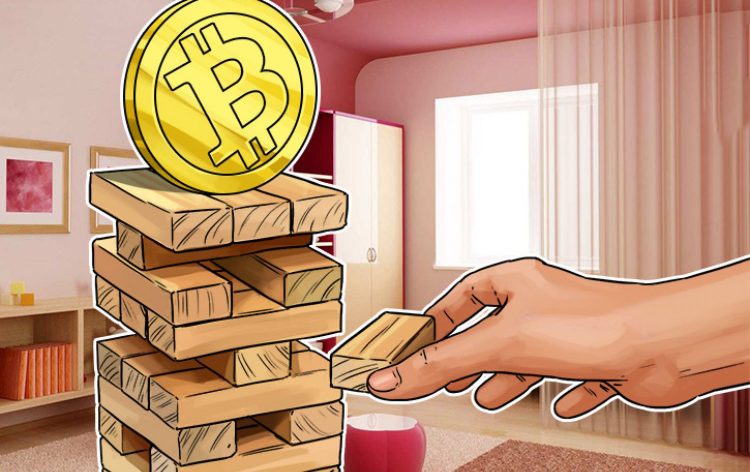Uncertainty surrounding bitcoin threatens the coin’s future

Last week was great for bitcoin, following a rise in bitcoin value of almost 50% between the 20th and 16th of July. Against expectations of a bitcoin crash, the virtual currency rallied to a month’s high of $2,850 on Thursday last week. However, yesterday we saw bitcoin value drop by almost 10%, briefly going below $2,500 briefly touching $2,276 before closing the day at $2,487. The whipsawing value of bitcoin is evidence of the uncertainty surrounding bitcoin due to the civil war among bitcoin miners.

What’s causing the uncertainty surrounding bitcoin?
After reaching an all-time high of $3,018 on the 11th of June, there was a correction and for the following month, bitcoin value remained within range around $2,500. On the 16th of July, though, the coin’s value dropped to 2-month lows of $1,938. At this point, investors were really worried and even feared that bitcoin would crash. The problem? Possibility of a hard fork, a split in bitcoin software.
The bitcoin network had been facing scaling problems due to the high demand for the coin. The unprecedented high demand had caused transactions to become slower and more expensive to perform. One solution was to create a new bitcoin network that could handle the high traffic, but not everyone backed the idea. The new bitcoin network would have split bitcoin into two, with perhaps disastrous consequences. The fear of a split was becoming more of a reality, and investors pulled out, causing the split.
A better solution to the bitcoin scaling problem was to implement BIP 91, which would double the bitcoin block size while at the same time retaining support for the previous ecosystem. This idea of a soft fork is what pushed bitcoin value higher last week. A lot of miners backed BIP 91 and it seemed to finally solve the prevailing problem.
Unfortunately, the BIP 91 proposal is only part of the solution. BIP 91 only activates the first part of SegWit, which decreases the hash power needed. Therefore, BIP 91 was supposed to encourage the second part, SegWit2x that would double bitcoin’s block size. The uncertainty surrounding bitcoin then comes from the lack of acceptance for SegWit2x by the majority bitcoin miners.
What happens now?
BIP 91 has already been activated and SegWit2x is on track to doubling the bitcoin block size. The alternative proposal, BIP 148, now seems unlikely yet it would have caused bitcoin to split. Despite the support BIP 91 received initially, some bitcoin miners are having second thoughts about it. The miners need to keep signaling for SegWit-style transactions until the lock-in deadline is reached. This is supposed to be done by the miners only accepting SegWit-style blocks and rejecting the rest. If not, then there will be two forms of bitcoin blocks, leading to an alternative chain and ultimately a different altcoin.

It would seem like supporting SegWit would be the better decision, but miners are prone to changing their minds. Back in April, litecoin miners tried activating SegWit, but even after the required majority was achieved, the miners stopped supporting the proposal. It took the coin’s creator Charlie Lee and other major litecoin miners agreeing to it that SegWit for litecoin was finally achieved.
There is the possibility this might happen with the increasing uncertainty over bitcoin implementing SegWit. Some are even making their own versions of bitcoin, such as Bitcoin Cash (BCC). The group behind Bitcoin Cash has already declared that they will split off from bitcoin on the 1st of August. Chinese exchange Huobi has already expressed its support for BCC, explaining that users will be able to mine BCC starting August. Now, BCC is currently trading at $461 in the open market, and it is the first serious break from bitcoin despite many such threats.
If Bitcoin Cash keeps its word and finally splits from bitcoin on the 1st of August, users will have bitcoin on both blockchains. Since BCC uses the same transaction history as bitcoin, a user’s records will be on both blockchains. The biggest fear, though, is that such actions may start to reduce support from SegWit, rolling back the progress made by BIP 91.
How does the uncertainty surrounding bitcoin affect its value?
When it comes down to it, we’re all interested in the value of bitcoin more than anything else as investors/speculators. The uncertainty surrounding bitcoin has indeed made the coin to lose value as we can see from the latest price charts, but it may also be a minor setback. A report by Goldman Sachs says that bitcoin’s value may rise to $3,600, and that the recent setbacks are just noise. Other experts claim that on the whole, bitcoin’s value has remained largely in range, and that the uptrend may resume soon. For now, I believe there is still a lot of uncertainty surrounding bitcoin, and it may not be the best time to invest in the coin. At least, not until we see some clear direction.



























Comments (0 comment(s))